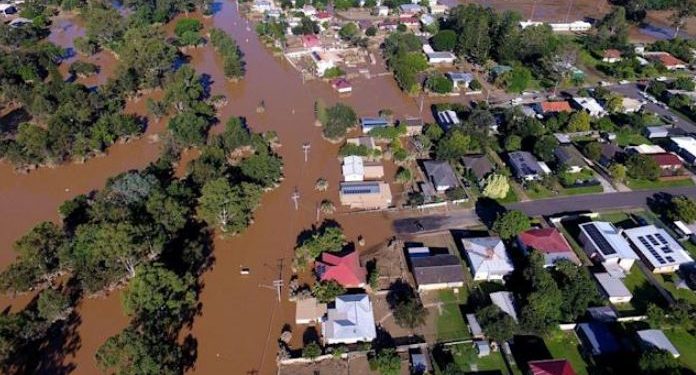Sydney: In the aftermath of what is likely to be Australia’s most costly and devastating flood, tens of thousands of residents have lost their homes and lack the proper insurance to rebuild.
Insurance data provided to Xinhua by the Insurance Council of Australia, the nation’s representative insurance body, showed that as of Wednesday insurance claims related to the floods in the states of New South Wales and Queensland had reached A$2.39 billion (about US $1.78 billion).
Nearly 80 per cent of the nearly 160,000 individual claims were for property damage, Xinhua news agency reported.
Professor Michael Sherris from the School of Risk and Actuarial Studies at the University of New South Wales (UNSW) Business School told Xinhua on Wednesday these numbers paint only part of the full picture.
“Insurance premiums were revised after the last flood in 2021. And a lot of people found them too expensive, and decided just to take the risk.”
In Lismore, the worst-hit area in NSW, residents have returned to over 4,000 homes rendered uninhabitable by the record-high floodwaters that engulfed the small town.
One such resident is Harley Nelson, who told Xinhua that many people in the town are on low incomes and have no way of rebuilding their homes which were underinsured and still in the process of being paid off.
“It’s easy to move away when you’re young and renting, but imagine you’re halfway through paying off a five hundred thousand dollar house and it’s just been destroyed,” said Nelson.
As natural disasters, primarily bushfires and floods become more severe, the worst-affected residents will continue to be priced out of insurance. Sherris said that this will make it harder and harder for large numbers of people to rebuild.
“Insurance really works on the principle where not a very large group of people have claims at the same time,” said Sherris.
He said it is becoming more and more necessary to provide financial assistance at the national and state levels in the form of a disaster relief fund.
“Much better, organised and funded schemes would make a lot more sense for these catastrophic risks.”
An Australian think tank, The Australia Institute, proposed on Wednesday a National Risk Assessment and a National Adaptation Plan that would place a levy on fossil fuel exports to provide public funding to those impacted by natural disasters.
“So-called once in 100-year disasters like the devastating recent floods and the catastrophic Black Summer bushfires are becoming all too frequent,” said Richie Merzian, inaugural Climate and Energy Program Director at the Australia Institute.
A survey of over 1,000 Australians conducted by the institute found that 74 per cent agreed that the country needed a national fund for disaster relief.
“There is clear support for a national climate disaster fund, so that those profiting from fossil fuels help contribute to the climate impacts, rather than disaster-stricken communities who are currently bearing the brunt.”
Apart from the economic cost of the floods, as residents return to destroyed homes and towns that have spent weeks underwater – the social and human cost has been brought into sharp relief.
A survey from the University of Sydney has shown that temporary or extended displacement following natural disasters left up to one in five of those impacted with some form of mental illness, such as anxiety or Post Traumatic Stress Disorder (PTSD).
Despite this urgency, the sheer number of people who have had residences destroyed in the floods means it will likely take weeks or months to receive insurance payments, and even longer to rebuild.
Sherris said as climate change worsens, people and governments across Australia would have little choice but to stop development in areas that are continually hit by natural disasters.
“The outcome of that building in flood-prone areas is regular, quite substantial losses people are bearing, and it just doesn’t make a lot of sense to allow development and building in these kinds of areas.”
IANS






































